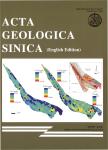Geodynamic Background of Intracontinental Cenozoic Alkaline Volcanic Rocks in Laojiezi, Western Yangtze Craton: Constraints from Sr-Nd-Hf-O Isotopes
Geodynamic Background of Intracontinental Cenozoic Alkaline Volcanic Rocks in Laojiezi, Western Yangtze Craton: Constraints from Sr-Nd-Hf-O Isotopes作者机构:Department of Earth SciencesFaculty of Land Resource EngineeringKunming University of Science and Technology Beijing SHRIMP CenterChinese Academy of Geological Sciences National Research Center for GeoanalysisChinese Academy of Geological Sciences Department of Earth ScienceKarakoram International University
出 版 物:《Acta Geologica Sinica(English Edition)》 (地质学报(英文版))
年 卷 期:2018年第92卷第6期
页 面:2098-2119页
核心收录:
学科分类:0709[理学-地质学] 0819[工学-矿业工程] 07[理学] 0818[工学-地质资源与地质工程] 0708[理学-地球物理学] 0816[工学-测绘科学与技术]
基 金:funded by the Open Foundation of the Beijing SHRIMP Center (DDC15-016) the Applied Basic Research Program Youth Project of Yunnan Province (2016DF031) the National Basic Research Program of China (2015CB452605)
主 题:Sr-Nd-Hf-O isotopes alkaline volcanic rocks post-collision Laojiezi deposit western Yangtze craton
摘 要:The Laojiezi alkaline volcanic rocks, which are located in the intraplate region of the Yangtze craton, coincide with the formation of the Jinshajiang-Ailaoshan-Red River alkaline rock belt. Although this belt has been widely studied by geologists because of its porphyry-related Pb-Ag-Au polymetallic deposit and geotectonic location, the material sources of this belt are still debate. Whole-rock analyses show that these rocks have high total alkali contents(3.73–11.08 wt%), and their aluminum saturation index(ASI) values widely vary from 0.82 to 3.07, which comprise a metaluminous-peraluminous magma series. These rocks are characterized by high K(K2 O/Na2 O1) and low Ti and Mg contents; enrichment in large-ion lithophile elements, such as Rb, Ba, K and light rare earth elements; and depletion in high field strength elements, such as Ta, Nb, P, and Ti. These rocks exhibit moderate Eu(Eu/Eu*=0.86–1.04) and Ce(Ce/Ce*=0.63–0.96) anomalies. Their(87 Sr/86 Sr)i, εNd(t), zircon εHf(t) and δ18 O values range from 0.70839 to 0.71013, from-10.16 to-12.45, from-19.6 to-5.8, and from 5.69‰ to 8.54‰, respectively, and their Nd and Hf two-stage model ages(TDM2) are 1.67–1.86 Ga and 1.27–2.02 Ga, respectively. These data reflect the primary partial melting of Paleoproterozoic to Mesoproterozoic lower crust with minor residual continental lithospheric mantle and supracrustal metasediments. The lithosphere was likely thickened along the southeastern margin of the Tibetan Plateau following the Indian-Asian continentcontinent collision(65–41 Ma). During the post-collision phase(36–16 Ma), the transition from a compressional to extensional setting triggered the convective removal of the over-thickened CLM beneath the Yangtze craton, which led to the upwelling of asthenospheric materials. This process created alkali-rich and high-K magma through the partial melting of the thickened lower crust. Magma that carried Cu-Au-Pb-Ag minerals was emplaced by strike-slip motion along the E-to W-



